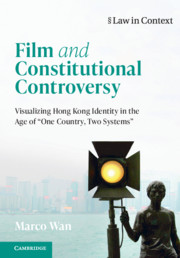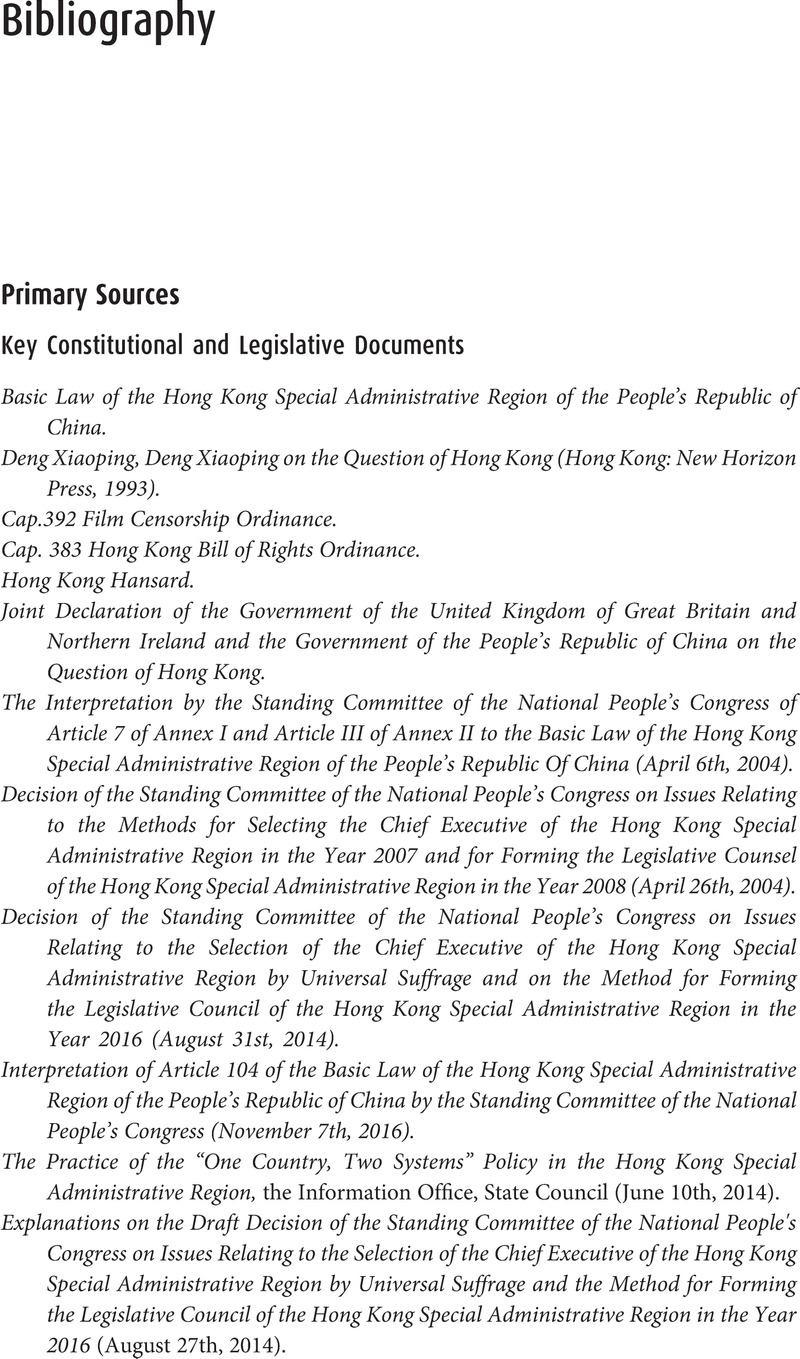 Film and Constitutional Controversy
Film and Constitutional Controversy Book contents
- Film and Constitutional Controversy
- Law in Context
- Film and Constitutional Controversy
- Copyright page
- Dedication
- Contents
- Acknowledgments
- Abbreviations
- Introduction
- 1 Love in a Time of Transition:
- 2 Laughing at the Law:
- 3 Women’s Rights and Censorship:
- 4 The Common Law after 1997:
- 5 A Matter of National Security:
- 6 Choosing the Leader:
- 7 Scenes from a Traumatic Event:
- Coda:
- Bibliography
- Filmography
- Index
- References
Bibliography
Published online by Cambridge University Press: 05 February 2021
- Film and Constitutional Controversy
- Law in Context
- Film and Constitutional Controversy
- Copyright page
- Dedication
- Contents
- Acknowledgments
- Abbreviations
- Introduction
- 1 Love in a Time of Transition:
- 2 Laughing at the Law:
- 3 Women’s Rights and Censorship:
- 4 The Common Law after 1997:
- 5 A Matter of National Security:
- 6 Choosing the Leader:
- 7 Scenes from a Traumatic Event:
- Coda:
- Bibliography
- Filmography
- Index
- References
Summary

- Type
- Chapter
- Information
- Film and Constitutional ControversyVisualizing Hong Kong Identity in the Age of 'One Country, Two Systems', pp. 161 - 169Publisher: Cambridge University PressPrint publication year: 2021


